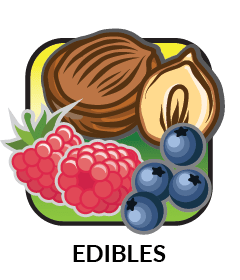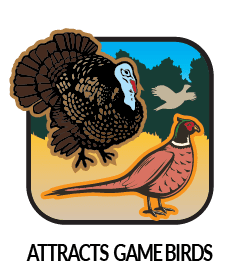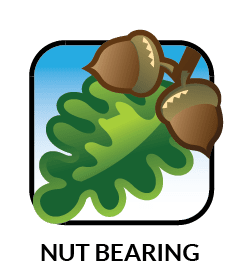American Chestnut
Plant Type: Dormant, bare-root
Zones: 4-8
Soil Type: Clay, Loamy & Sandy Soils
Site Selection: Full Sun
Mature Height & Width: 60-80' Height and 30-40' Spread
Growth Rate: Moderate/Fast - 12-24+" per year once established
Moisture Requirements: Average soils






American Chestnut
Castanea dentata
Please note: Due to overwhelming demand, the number of American Chestnut trees which can be purchased is 5 per size.
The American Chestnut is a large, broad tree that produces an edible chestnut. Large leaves turn yellow and brown in autumn. At least two American Chestnuts planted no more than 200' apart are required for producing chestnuts. This tree was very common before blight wiped out most of them in the early 1900's. For more information on the blight resistance of these trees, please see the "More Info" tab above. Help do your part to return this native species to glory!
Important information on blight resistance:
Once an important hardwood timber tree, nearly 4 billion American Chestnut trees were nearly wiped out between 1900 and 1940. This was due to what is known as the Chestnut blight. The blight is caused by an Asian bark fungus accidentally introduced into North America on imported Asiatic chestnut trees.
Our pure American Chestnuts come from mature parents who have survived the blight and are producing chestnut seeds. For now, the possibility of American Chestnuts getting the blight sometime in their life is a real possibility. These seedlings are grown from chestnuts collected from a large orchard of very old American Chestnut trees which have never displayed symptoms of the blight even though the blight has affected all the other trees in the region. It is uncommon to see this happen and leads us to believe that the parents may have some natural built in blight resistance.
At this time, there are no blight proof American Chestnut seedlings available for commercial sale. There is a great deal of work being done to develop highly blight resistant American Chestnuts. However, it takes time to cross breed the trees with alternative chestnuts like the Chinese Chestnut or other American Chestnuts which have shown blight resistance. Work is also being done in an attempt to inoculate American Chestnut trees to give them built in resistance. We will offer the highly resistant types as soon as they are available. For now, these are about as good as they get commercially.
Common uses for the American Chestnut:
- Large shade tree
- Produces an edible chestnut
- Chestnut provides an excellent source of food for wildlife
The American Chestnut produces a nut which many types of wildlife enjoy. The chestnut is a valuable food source for deer, black bear, raccoon, chipmunk, hares, squirrels, turkey, grouse and quail.
Product Questions
At this time, there are no blight proof American Chestnut seedlings available for commercial sale. There is a great deal of work being done to develop highly blight resistant American Chestnuts. However, it takes time to cross breed the trees with alternative chestnuts like the Chinese Chestnut or other American Chestnuts which have shown blight resistance. Work is also being done in an attempt to inoculate American Chestnut trees to give them built in resistance. We will offer the highly resistant types as soon as they are available. For now, these are about as good as they get commercially.
At this time, there are no blight proof American Chestnut seedlings available for commercial sale. There is a great deal of work being done to develop highly blight resistant American Chestnuts. However, it takes time to cross breed the trees with alternative chestnuts like the Chinese Chestnut or other American Chestnuts which have shown blight resistance. Work is also being done in an attempt to inoculate American Chestnut trees to give them built in resistance. We will offer the highly resistant types as soon as they are available. For now, these are about as good as they get commercially.





